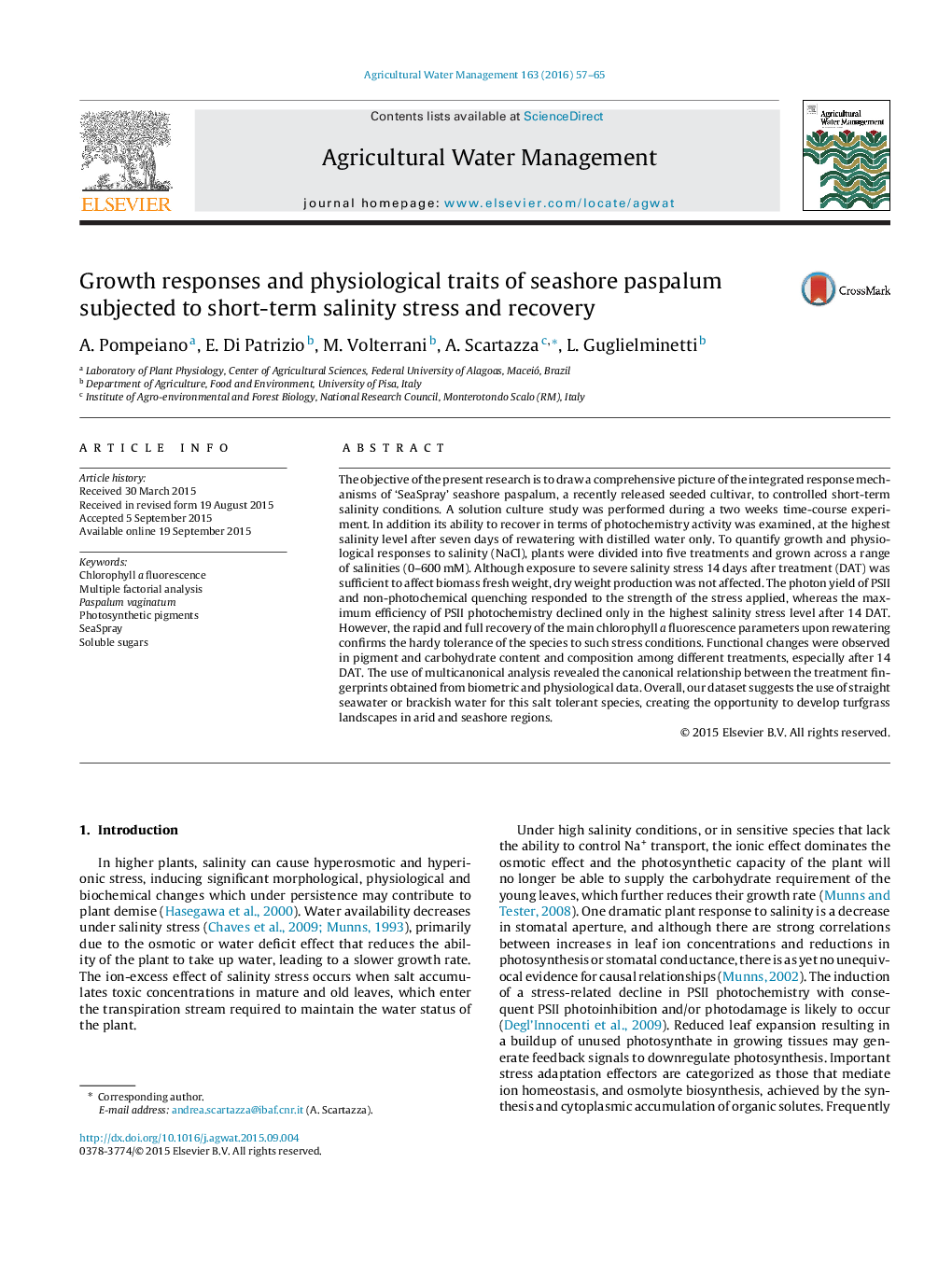| کد مقاله | کد نشریه | سال انتشار | مقاله انگلیسی | نسخه تمام متن |
|---|---|---|---|---|
| 4478337 | 1622916 | 2016 | 9 صفحه PDF | دانلود رایگان |
• We evaluate the response of seashore paspalum to controlled short-term salinity.
• The species exhibited susceptibility in biometric traits as the salinity increased.
• Maximum efficiency of PSII photochemistry declined only in the highest salinity.
• A full recovery of the fluorescence parameters upon rewatering was observed.
• The rapid osmotic adjustment capacity was associated with higher sugar levels.
The objective of the present research is to draw a comprehensive picture of the integrated response mechanisms of ‘SeaSpray’ seashore paspalum, a recently released seeded cultivar, to controlled short-term salinity conditions. A solution culture study was performed during a two weeks time-course experiment. In addition its ability to recover in terms of photochemistry activity was examined, at the highest salinity level after seven days of rewatering with distilled water only. To quantify growth and physiological responses to salinity (NaCl), plants were divided into five treatments and grown across a range of salinities (0–600 mM). Although exposure to severe salinity stress 14 days after treatment (DAT) was sufficient to affect biomass fresh weight, dry weight production was not affected. The photon yield of PSII and non-photochemical quenching responded to the strength of the stress applied, whereas the maximum efficiency of PSII photochemistry declined only in the highest salinity stress level after 14 DAT. However, the rapid and full recovery of the main chlorophyll a fluorescence parameters upon rewatering confirms the hardy tolerance of the species to such stress conditions. Functional changes were observed in pigment and carbohydrate content and composition among different treatments, especially after 14 DAT. The use of multicanonical analysis revealed the canonical relationship between the treatment fingerprints obtained from biometric and physiological data. Overall, our dataset suggests the use of straight seawater or brackish water for this salt tolerant species, creating the opportunity to develop turfgrass landscapes in arid and seashore regions.
Journal: Agricultural Water Management - Volume 163, 1 January 2016, Pages 57–65
